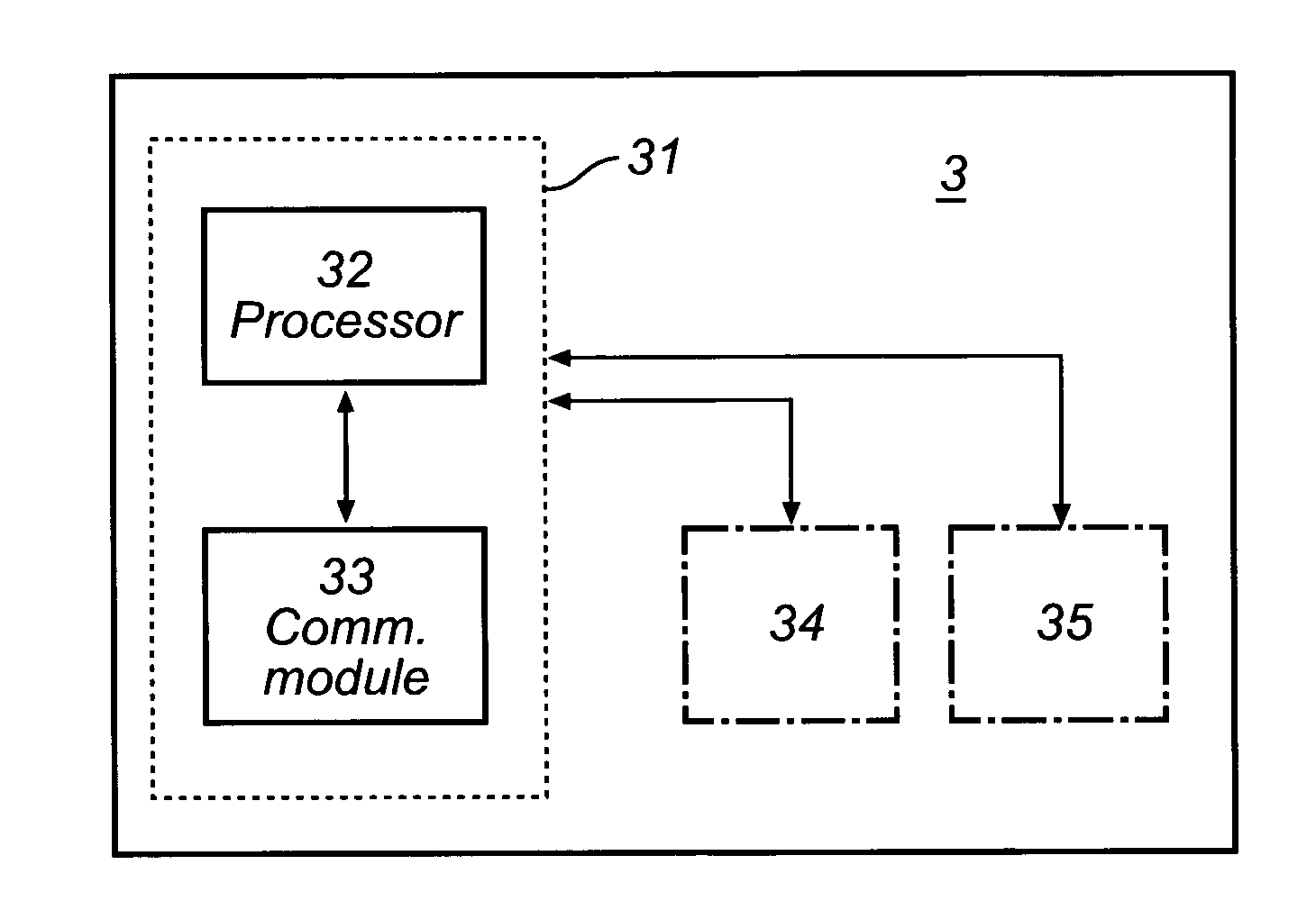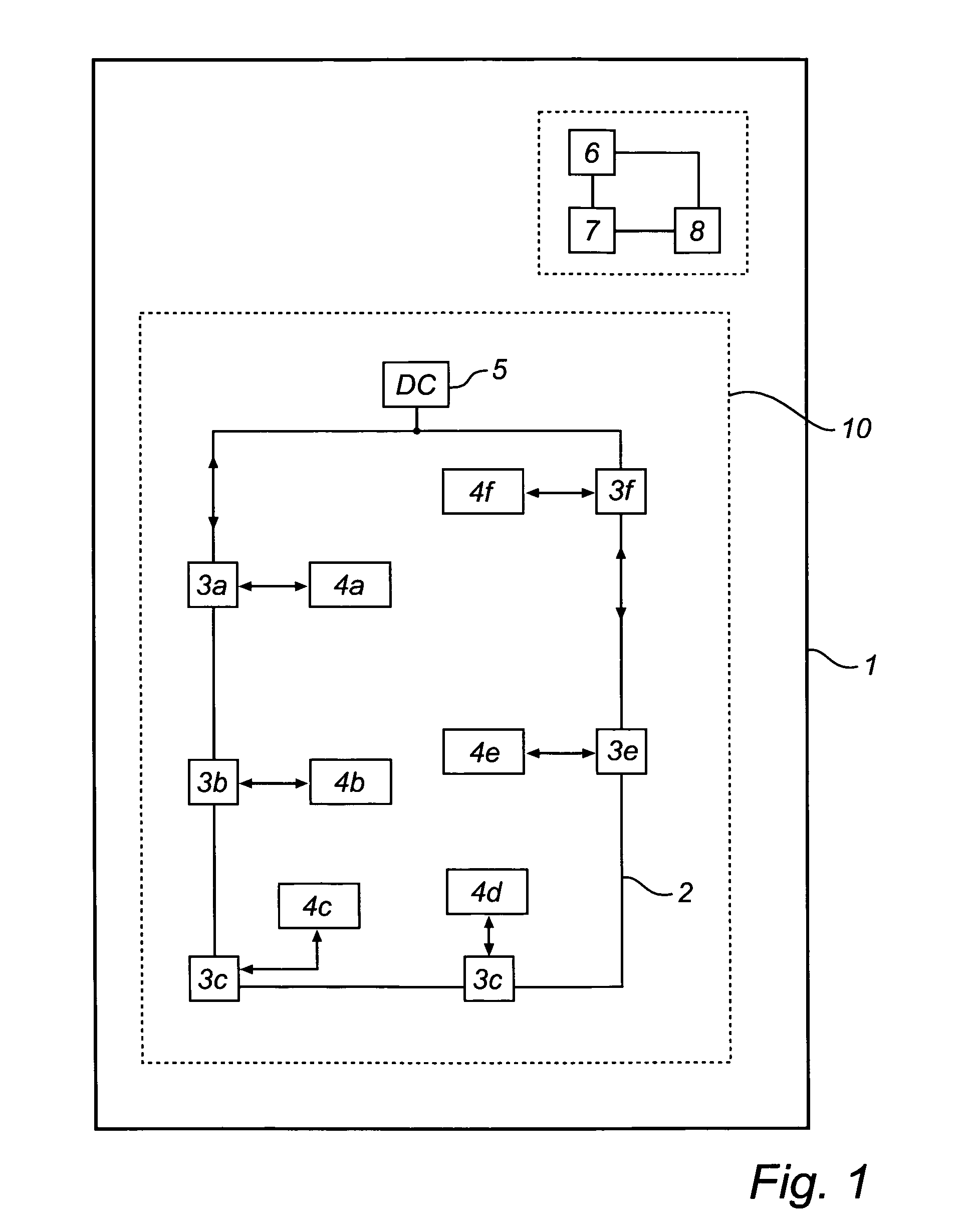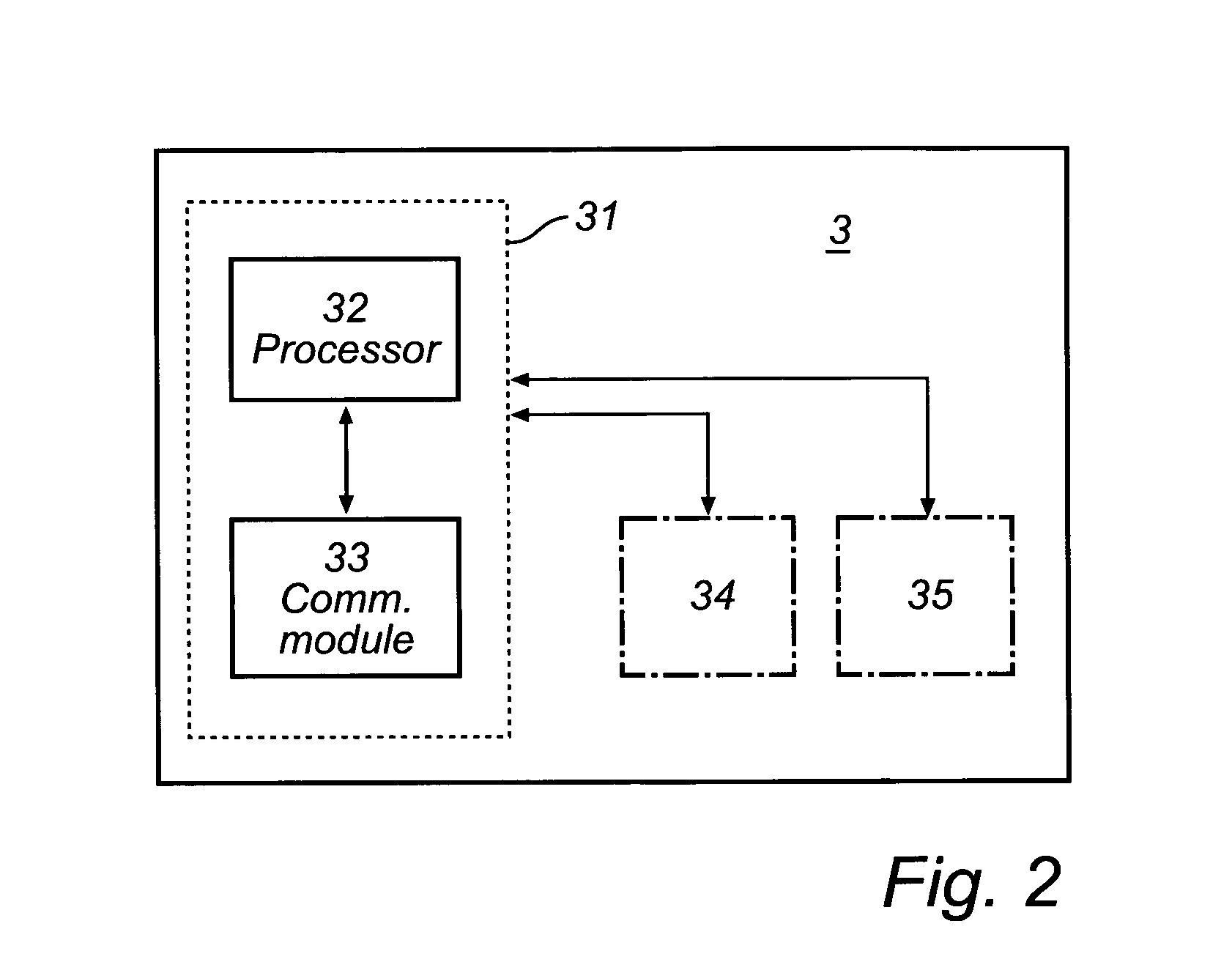Bus control for a domestic appliance
a domestic appliance and bus control technology, applied in the field of domestic appliances, can solve the problems of increasing the probability of failure of some portion of the wiring of the control system increasing the complexity increasing the cost of domestic appliance manufacturing/assembly, so as to maintain the operation reliability of the domestic appliance, alleviate or eliminate one or more, and enhance production efficiency
- Summary
- Abstract
- Description
- Claims
- Application Information
AI Technical Summary
Benefits of technology
Problems solved by technology
Method used
Image
Examples
example
[0115]With reference to FIG. 3 and by way of example and not limitation, the bus control system 10 (see FIG. 1; not shown in FIG. 3) can be disposed within a dishwasher 100. In the dishwasher 100, the bus control system provides for user inputs via the user interface (not shown in FIG. 3) to control water temperature and corresponding operational components (for hot and cold water) to control the dishwashing water supply to provide the desire temperature. Still further, operational components such as a turbidity sensor 4 or the like can be used to sense the water cleanliness and, accordingly, determine the proper length of washing cycles, timing for the addition of detergent, etc. Moreover, operational components such as speed sensors can similarly provide further input for dishwasher control.
II
[0116]In advantageous embodiments of the invention, which are shown in FIG. 4, a domestic appliance 1 comprises a bus 2 having connected to it a plurality of combined control / connectors 3, wh...
embodiment 1
[0154]A domestic appliance (1) comprising a bus (2) disposed within the domestic appliance (1), characterized in that multiple combined control / connectors (3a, 3b, 3c, 3d, . . . ) are electrically coupled to the bus (2), wherein each combined control / connector (3a, 3b, 3c, 3d, . . . ) is electrically connected via the bus (2) to at least one of the other combined control / connectors (3a, 3b, 3c, 3d, . . . ) to thereby power the at least one combined control / connector (3a, 3b, 3c, 3d, . . . ), and wherein each combined control / connector (3a, 3b, 3c, 3d, . . . ) is communicatively coupled to a respective operational component (4a, 4b, 4c, 4d, . . . ) of the domestic appliance (1) to thereby control the same, said operational component (4a, 4b, 4c, 4d, . . . ) being associated with a certain operation or function of the domestic appliance.
embodiment 2
[0155]The domestic appliance (1) according to embodiment 1, wherein each combined control / connector comprises a connector block into which a controller is integrated.
PUM
 Login to View More
Login to View More Abstract
Description
Claims
Application Information
 Login to View More
Login to View More - R&D
- Intellectual Property
- Life Sciences
- Materials
- Tech Scout
- Unparalleled Data Quality
- Higher Quality Content
- 60% Fewer Hallucinations
Browse by: Latest US Patents, China's latest patents, Technical Efficacy Thesaurus, Application Domain, Technology Topic, Popular Technical Reports.
© 2025 PatSnap. All rights reserved.Legal|Privacy policy|Modern Slavery Act Transparency Statement|Sitemap|About US| Contact US: help@patsnap.com



